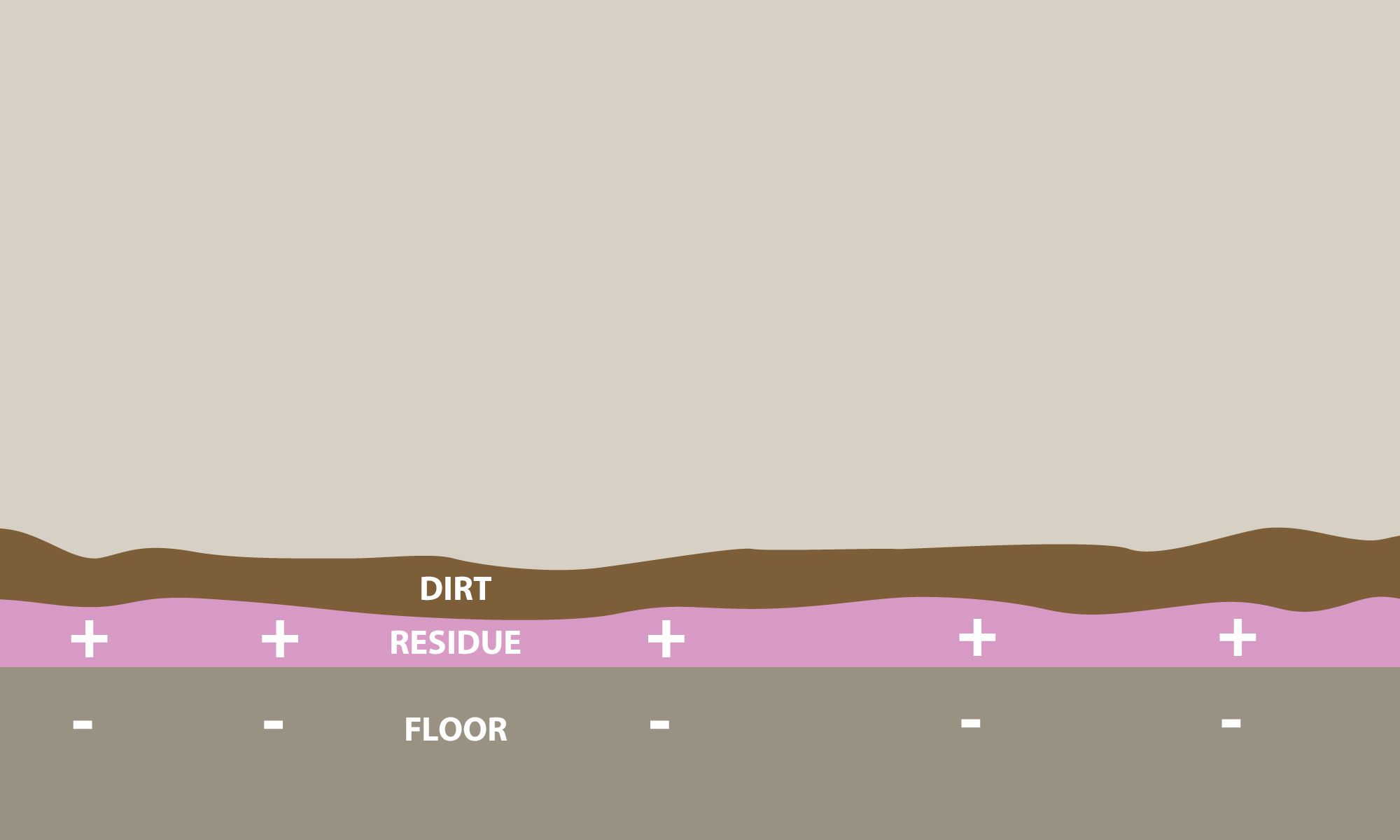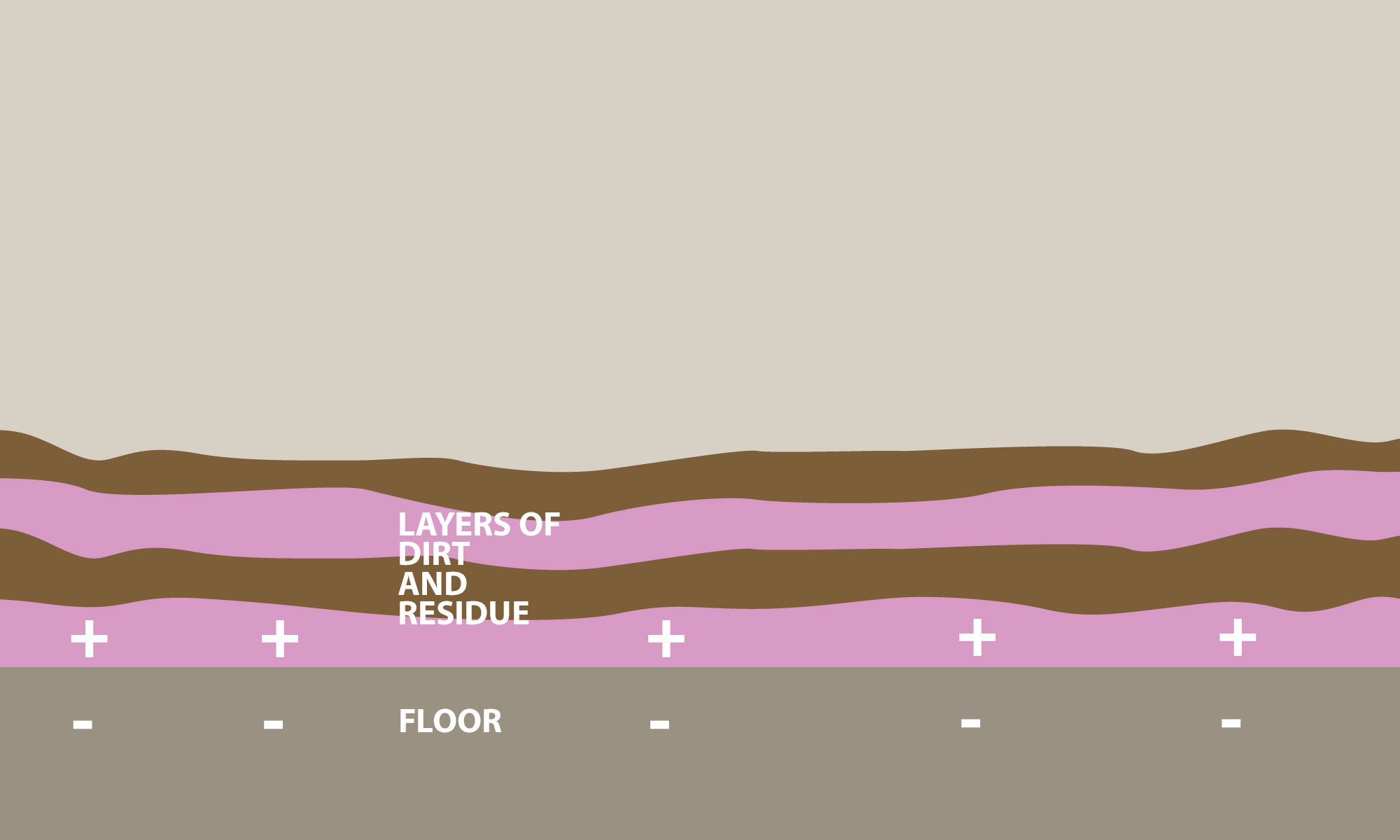Disinfecting floors by using quaternary disinfectants (quats) is a common practice, especially in healthcare facilities. This should be a two-step process of cleaning and then disinfecting. However, quats are commonly used in one step, and while they are a disinfectant, they aren’t effective cleaners. In fact, quats are classified as cationic surfactants and are positively charged1, which, when in opposition to a negatively charged floor, can create a molecular attraction.

The positively-charged quat residue is attracted to the negatively charged floor. Since quats have a natural stickiness or tackiness, they attract soils to them.

These two properties—the molecular attraction of the quats to the floor and dirt to quats—creates an environment in which the residue and dirt build-up can become thicker and more layered over time.
This residue can lead to all sorts of problems, including:
- Unappealingly sticky floors
- Floors that look dirty faster
- Slippery floors that can lead to more slip and fall accidents
- The creation of bio-films that can serve as a breeding ground for bacteria
Sign up for a free e-Book
Want to find out more about what's making your floors look dirty? What's making them sticky or slippery, and how to prevent it? Get a copy of Preventing Dirty, Sticky, Slippery Floors for free.
Get started